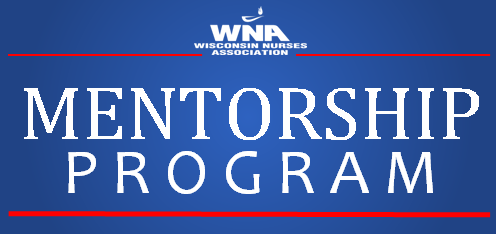Suzanne Marnocha, PhD, RN, MSN, CCRN ret marnocha@uwosh.edu
University of Wisconsin Oshkosh College of Nursing
Judith Westphal, PhD, RN westphj@uwosh.edu
University of Wisconsin Oshkosh College of Nursing
Becki Cleveland, MSN, RN clevelan@uwosh.edu
University of Wisconsin Oshkosh College of Nursing
The University of Wisconsin Oshkosh College of Nursing builds “upon its tradition of developing caring and scholarly leaders who positively impact contemporary and future healthcare” [1]. This vision statement grounds our efforts to support and educate our students at an undergraduate level. This article describes the experiences of the authors as faculty members mentoring undergraduate students and describes the successes and the opportunities for improvement.
Transition to New Roles
Mentoring is an evolving term, which includes both the professional and personal development of a less experienced individual [2]. For the purposes of this article, mentoring is conceived differently than precepting and includes development of the person and their professional role, as well as providing guidance for skill development. Whereas, precepting involves daily teaching, supervision, and student guidance, often in a clinical setting [3].
Approaching graduation, undergraduate nursing students are generally positive and enthusiastic, anticipating transition to their new roles. However, after graduation, many of these new nurses struggle with numerous responsibilities and challenges [4, 5]. Nursing graduates are concerned with managing and prioritizing their work in order to complete all tasks in a timely manner, along with feeling disrespected and disempowered by coworkers and physicians [6-9]. Assigning willing mentors to work with new graduates has proven to lessen the stress and improve satisfaction during the transition process these new nurses face [10, 11].
Healthcare administrators are looking for methods of retaining new employees, including RNs, nurse practitioners, nurse educators, and clinical nurse leaders to reduce costly staff turnover. Retaining these individuals begins with improving new graduates’ transition from academe to the work environment. If the transition can be improved and perceived as a positive experience, nurses will have greater job satisfaction. Job satisfaction leads to a decrease in nurse turnover and a greater retention of nurses [12].
Studies have indicated that investing time and resources in creating mentor/mentee relationships are beneficial to healthcare organizations [13]. The annual monetary costs incurred for recruiting, hiring, training, and then losing an RN vary between $82,000 and $88,000 [14].
Unquantifiable costs include the emotional upheaval of the new employee, along with the staff and the agency [15].
Both Davis [4] and Kacel et al. [16] found that the nurse’s transition into practice was positively affected when participants had supportive mentorships and appropriate orientations. Delaney [8] found that investing time and resources for these graduates was beneficial to healthcare organizations in the long run, whether it was spent educating mentors on graduates’ needs, increasing incentives and support for mentors, arranging support groups for new nurses during this transition, or lengthening and/or restructuring orientation. Transitioning to a new role can be enhanced by working with a mentor to walk through the decision- making processes and thereby improving critical thinking [5]. A study of hospital workers by Lavoie-Tremblay and collaborators [17] revealed that strategies that improve the work climate would be beneficial in retaining employees.
Mentoring Program
For many, the first introduction to the mentor/mentee relationship occurs in the employment setting. Mentoring programs can use unstructured or structured formats. A well-defined structure can enhance a mentoring program and includes the following components: (a) definition of mentoring, (b) identification of roles and responsibilities, (c) specific program objectives, and (d) a method to measure outcome achievement [18]. The faculty members at the university wanted to ensure students were well prepared, successful, and had skills to be future nurse leaders. Mentoring was viewed as a mechanism to accomplish these goals. A mentorship pilot program was undertaken to assist undergraduate nurses to transition successfully into their professional roles. The pilot mentoring program was based on the idea of introducing mentorship to assist individuals enrolled in an academic program in understanding the roles of mentee and mentor. A structured format was used for the mentoring program and included a definition of mentoring, identification of roles and responsibilities of the mentor and mentee, program objectives and feedback. Kram’s [19] article identified four mentoring phases: (a) initiation, (b) cultivation, (c) separation, and (d) redefinition, and was used to guide the mentoring process. Components of this program were based on the assumption that empowerment is a critical feature of developing leaders. The mentorship role allows a willing and experienced person (faculty member or sometimes senior nursing students) to empower students to develop more completely.
Empowerment is being inspired with confidence and knowledge [11]. It is a difficult task to empower others and may take several years to establish an empowering environment and/or culture. Kouzes and Posner [20] identified five leadership practices which can be used to empower individuals. These practices include: (a) challenging the process, (b) inspiring a shared vision, (c) enabling others to act, (d) modeling the way, and (e) encouraging the heart. In the mentoring process the mentor works with the mentee in challenging assumptions, creating a shared direction, guiding and modeling behaviors, and encouraging the mentee to develop skills and knowledge.
The University of Wisconsin Oshkosh, College of Nursing, has developed a mentorship program for undergraduate students, which focuses on promoting student success. Faculty members of the College of Nursing (CON) believe a successful nursing student is represented by more than a high grade point average. This commitment to student success begins with a holistic admissions process, which not only reviews incoming grade point average, but also five additional criteria: (a) certified nursing assistant certification, (b) healthcare background check, (c) volunteer work, (d)experiences with diverse groups, and (e) a personal interview. The holistic admission process identifies those students likely to succeed in the program; however, some students still remained at risk for academic failure.
Program Successes and Opportunities for Improvement
Thus far, the mentoring experience has been positive from the perspective of the mentors. The following activities are identified as program successes: (a) students successfully transitioning through academic levels; (b) retention of students and engagement of students in professional activities outside of regular curricular expectations; (c) research poster development and presentation; and (d) development and submission of institutional review board application. The authors believe that opportunities for improvement include; (a) identify mentoring evaluation tools to effectively measure the mentor/mentee perception of the experience, (b) have students set short and long term goals and evaluate goal progress on a quarterly basis, (c) streamline processes to include more students in mentoring activities including senior level students involved in the Oshkosh Student Nurses Association (OSNA) mentoring pre-nursing students, and (d) work with healthcare agencies to successfully transition students to new mentors in the work environment.
Mentoring is a useful strategy to help individuals new to a role develop and grow professionally. Nursing students are not routinely exposed to mentoring in the course of academic study. Nurses may experience mentoring for the first time in professional practice. Exposing students to mentoring roles and responsibilities may make the transition to practice easier.
References
Boldra, J., Landin, C., Repta., Westphal, J., & Winistorfer, W. (2008). The value of leadership development through mentoring. Health Progress July-August. 33-36.
Bradbury-Jones, C., Sambrook, S. & Irvine F. (2011). Empowerment and being valued: A phenomenological study of nursing students’ experiences of clinical practice, Nursing Education Today 31, 368-372.
Bradbury-Jones C., Sambrook S. & Irvine F. (2007) The meaning of empowerment for nursing students: a critical incident study. Journal of Advanced Nursing 59(4), 342–351
Brinket, R. (2010) A literature review of conflict communication causes, costs, benefits and interventions in nursing, Journal of Nursing Management, 2010, 18, 145–156
Grossman, S. (2007) Mentoring in nursing:A dynamic and collaborative process. New York: Springer Publishing Company.
Davis, S. (2009). Being a nurse: Perceptions of one year baccalaureate nurses. Unpublished thesis.
Delaney, C. (2003). Walking a fine line: Graduate nurses’ transition experience during orientation. Journal of Nursing Education, 42(10), 437-443.
Gerrish, K. (2000). Still fumbling along? A comparative study of the newly qualified nurse’s perception of the transition from student to qualified nurse. Journal of Advanced Nursing, 32(2), 473-480.
Halfer, D., & Graf, E. (2006). Graduate nurse perceptions of the work experience. Nursing Economics, 24(3), 150-155.
Hayes, B., Bonner, A., & Pryor, J. (2010). Factors contributing to nurse job satisfaction in the acute hospital setting: A review of literature. Journal of Nursing Management 18, 804-814.
Jones, C. (2008). Revisiting Nurse Turnover Costs. Journal of Nursing Administration 38(1) 11-18.
Kacel, B., Miller, M., Norris, D. (2005). Measurement of nurse practitioner job satisfaction in a Midwestern state. Journal of American Academy of Nurse Practitioners 17 (1), 27-32.
Kleinpell, R. (1997). Acute-care nurse practitioners: Role and practice profiles. AACN Clinical Issues: Advanced Practice in Acute and Critical Care, 8(1), 156-162.
Kram, K. (1983). Phases of the Mentor Relationship. Academy of Management Journal 26(4), 608-625.
Luhanga, F., Myrick, F., & Yonge, O. (2009). The preceptorship experience: An examination of ethical and accountability issues. Journal of Professional Nursing 26(5), 264-271.
Roberts, A. (2000). Mentoring revisited: A phenomenological reading of the literature. Mentoring and Tutoring, 8, 145-170.
Yeager, S. (2010). Detraumatizing Nurse Practitioner Orientation. Journal of Trauma Nursing 17(2), 86-101.
Zinsmeister, L. B, & Schafer, D. (2009). The exploration of the lived experience of the graduate nurse making the transition to registered nurse during the first year of practice. Journal for Nurses in Staff Development, 25(1), 28-34.



